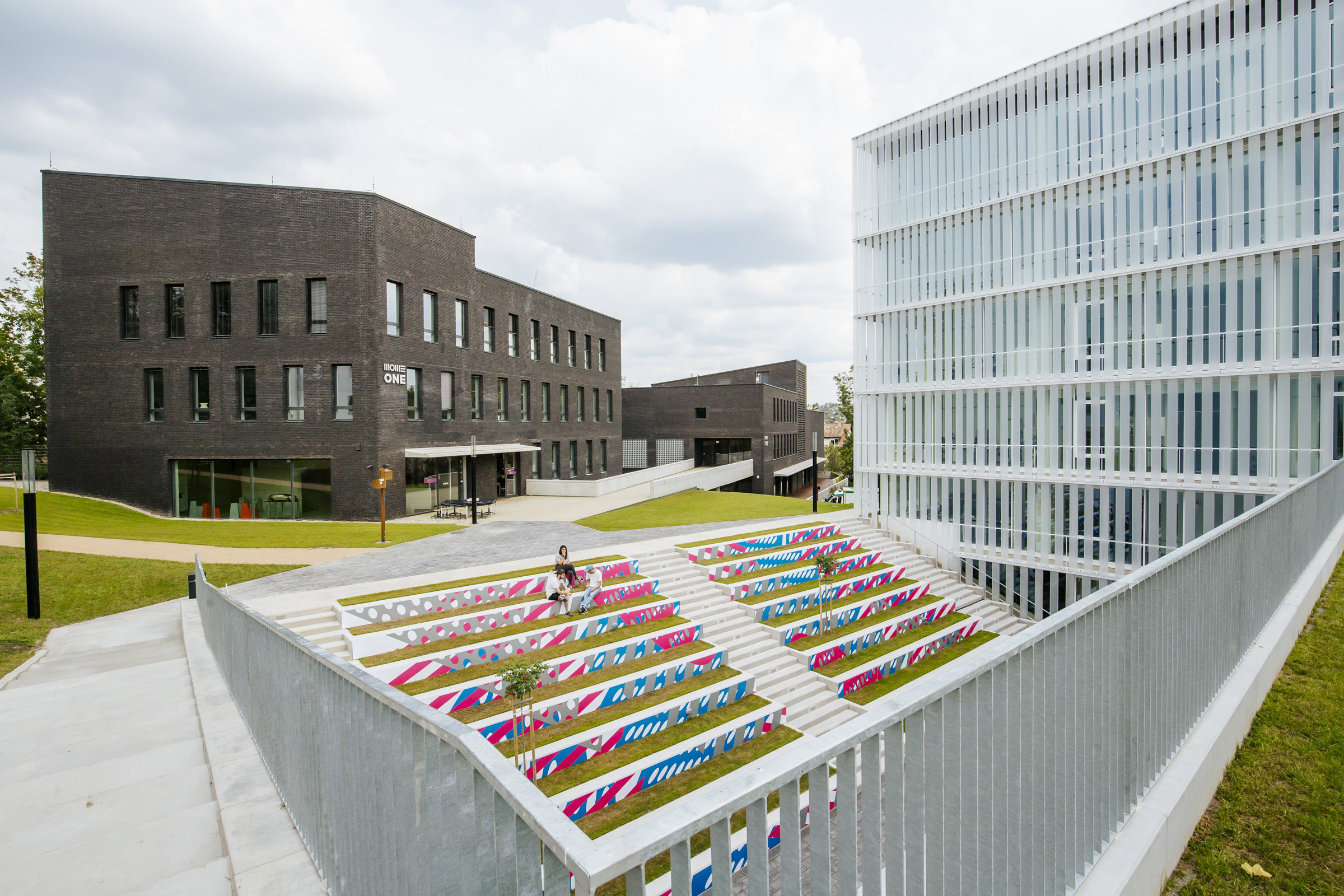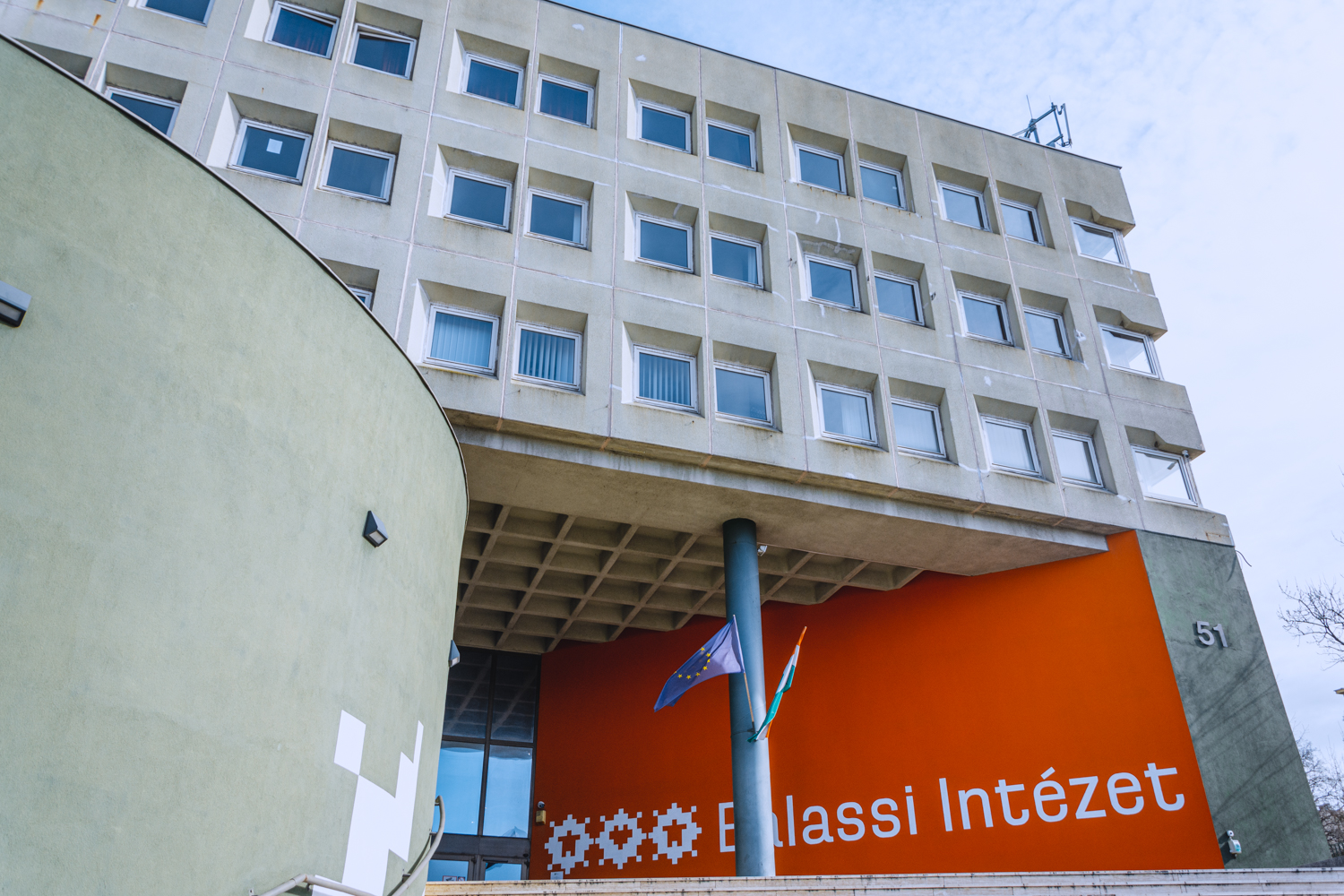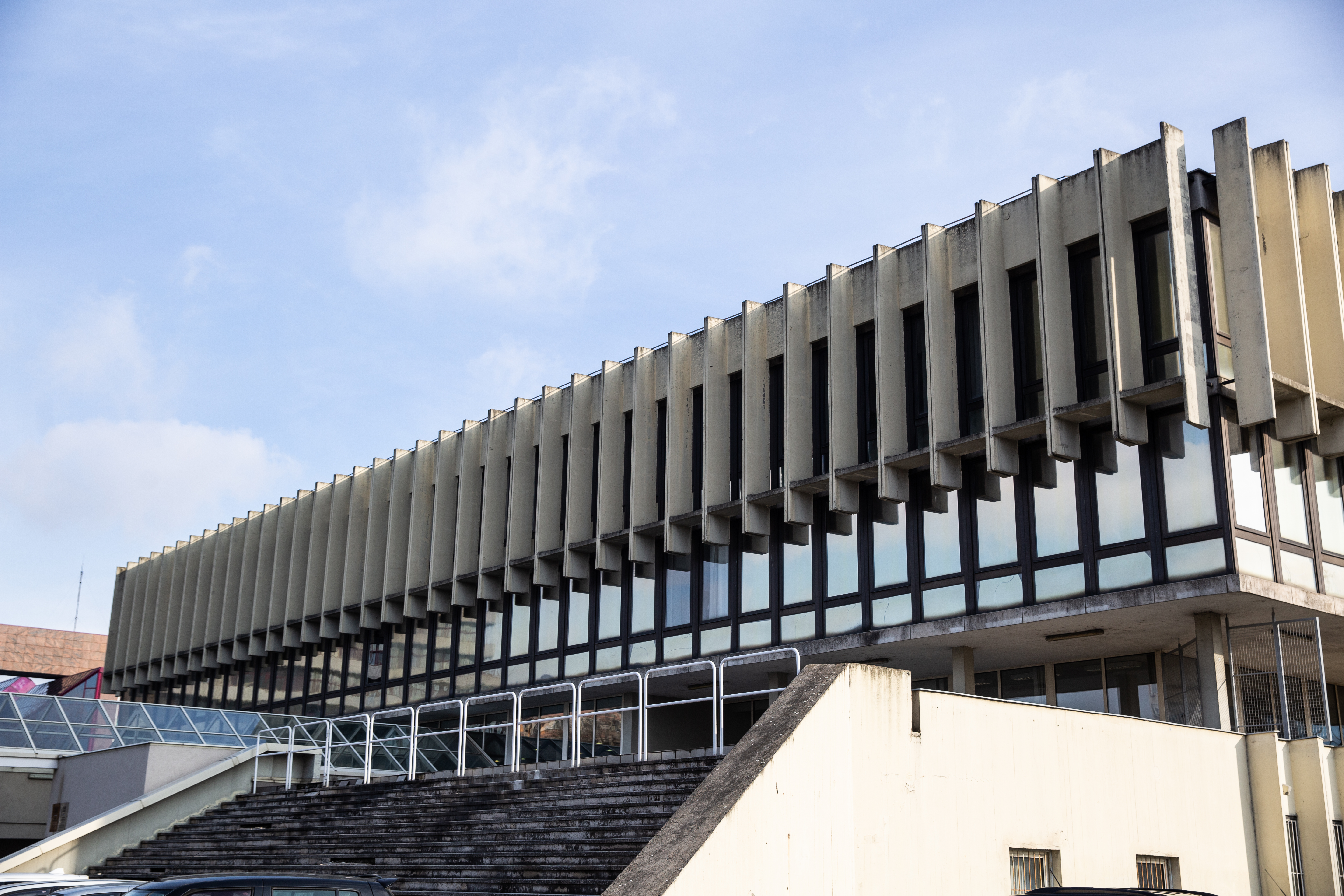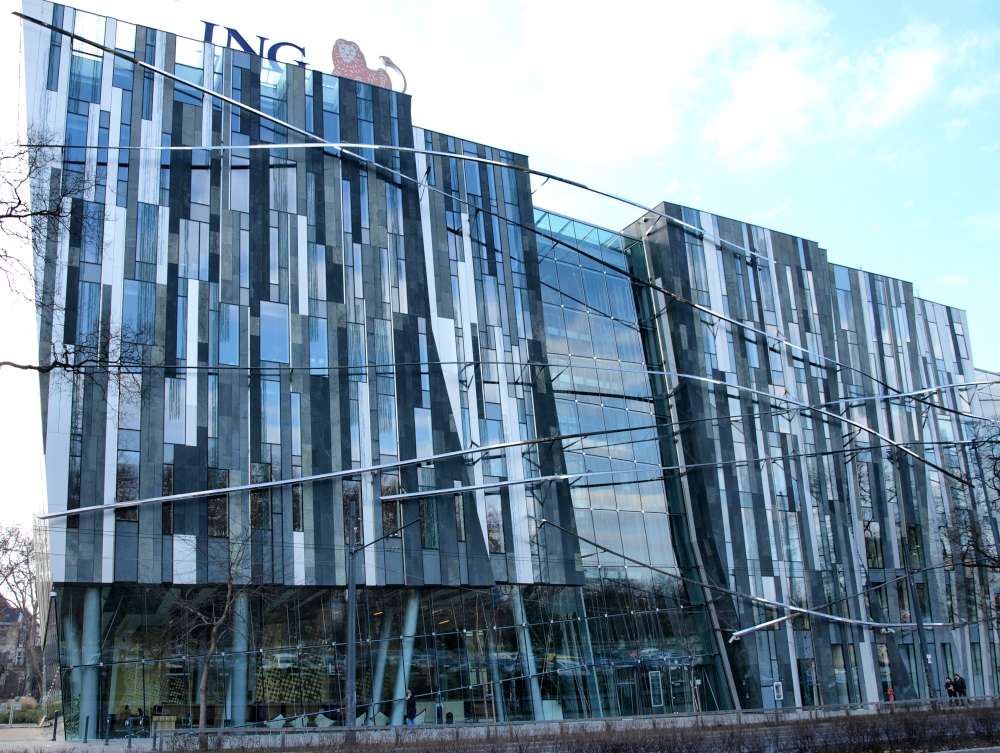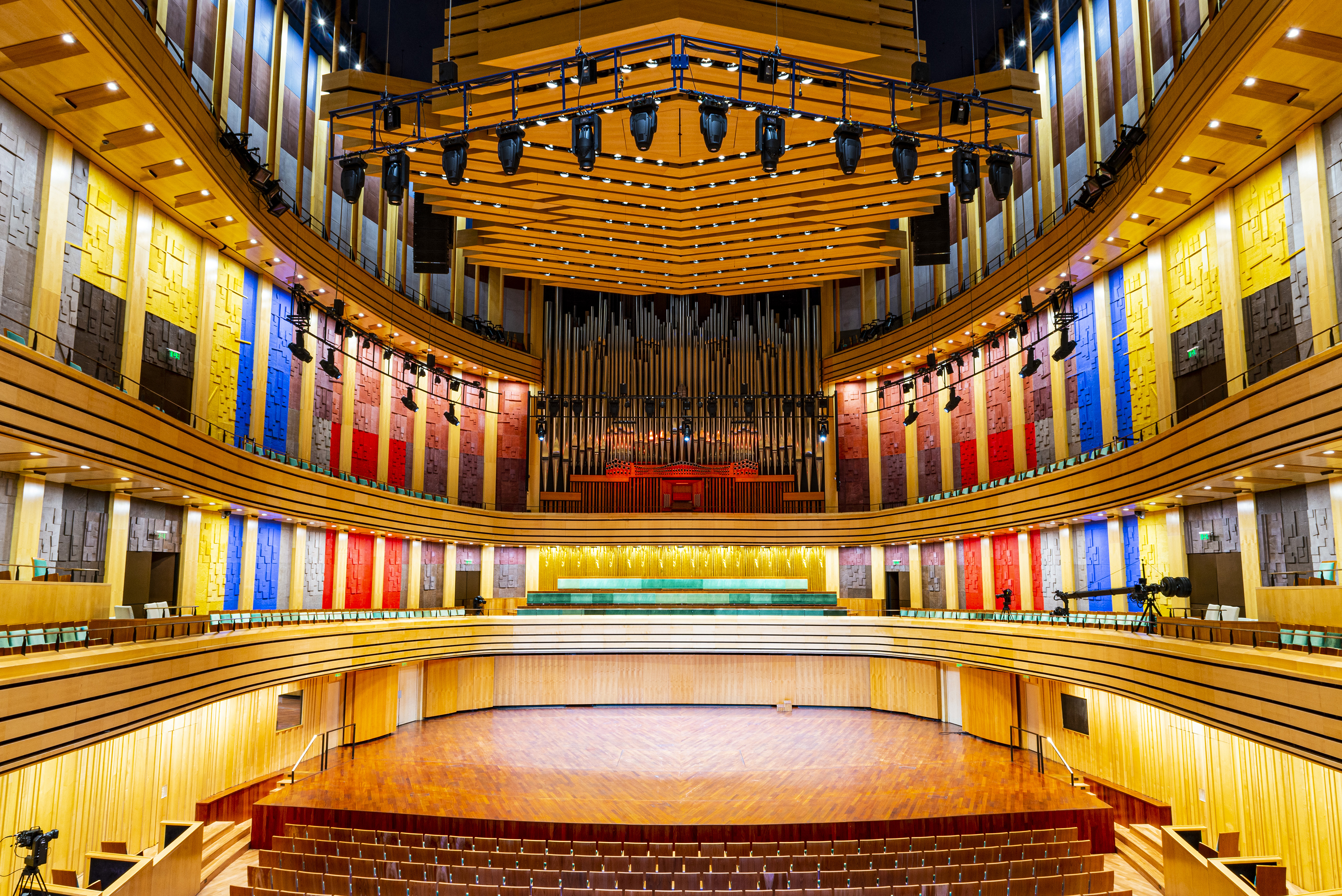1/5
Balassi Institute
This was built according to the plans of the only woman architect to be
a two-time Ybl-award winner, Margit Pázmándi. Located at Somlói út 51 on the
slope of Gellért Hill, it is special in several respects. One of the few Modernist-Brutalist
buildings that somehow successfully survived into the 21st century, after a little
renovation (the National Police Headquarters also operated here), it managed to
find a suitable function, the Balassi Institute for Hungarian culture. We
especially love the red-green painting of the concrete building and the colourful
little details on the back façade. News of its demolition, however, was
announced in 2020, the building going the way of another Pázmándi-designed structure,
the inner terraces of the Ifjúsági Park, now part of the Várkert Bazár.
2/5
Former MSZMP Party HQ
Pázmándi also designed this remant from the 1970s. Fans of Brutalism may
be familiar with the MSZMP Party headquarters at Váci út 71, District XIII,
particularly Váci út, now evokes images of an office corridor. Back then
it had ties to the Labour movement, so these Party headquarters had to be given
the same emphasis. Pázmándi was sensitive to the trends of the day, so the play
of the cantilevered façade and the concrete slats provided for shade was not
accidental – it consciously brought elements of Brutalism to Budapest.
Incidentally, the building was also selected for the Othernity – Reconditioning
our Modern Heritage project of the Hungarian pavilion at the 17th Venice
Architecture Biennale.
3/5
ING headquarters
For a long time, the ING headquarters on György Dózsa út designed by
Erick van Egeraat and Judit Z Halmágyi was the most divisive contemporary
building around Városliget, but the Ethnographic Museum opposite may have taken
the spotlight off it. To this day, the emblematic building makes
visitors stop, as it attracts attention not only because of its glass, but also
with patterns imitating strange drops of water or perhaps a waterfall with metal
strips, a fragmented façade and motifs from textile art. Halmágyi is also
actively involved in shaping the image of Budapest, among the jury of the
design competition for the new Danube Bridge and the Transport Museum.
4/5
MOME Workshop, Studio & Media House
There has been a huge campus development in recent years at MOME, the
Moholy-Nagy University of Art & Design in Buda. This has meant not only
renovating existing buildings but also building new ones. The milestone of the
development in Zugliget was the completion of the Workshop House designed by
Zsófia Csomay, and then the Studio and Media House. The buildings follow the character
of the area, and the architect worked with valuable and quality materials
instead of trendier ones. In addition, the personality of Katalin Csillag of architectural
firm 3h is unmissable in the design of the Zugliget front area of MOME.
5/5
Müpa
The building of the Müpa Palace of Arts might have turned out quite differently if Nóra
Demeter had been alongside chief architect Gábor Zoboki. She is one of Hungary’s
most renowned international architects who graduated in the United States, and was
previously president of the European section of the American Institute of
Architects. She has been involved in many urban planning projects
in the capital, working with openness and sensitivity.
